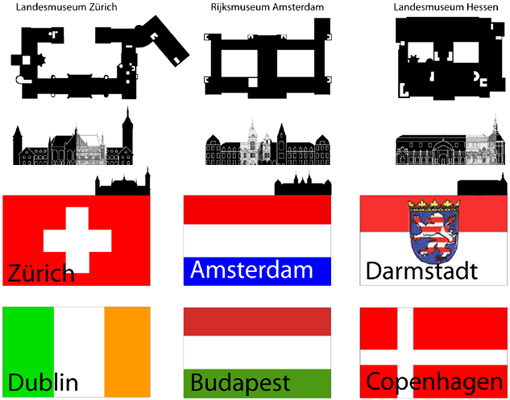client: The Euroscapes project (Must, Amsterdam)
team: Güller Güller architecture urbanism
publication in: Euroscapes - Forum, vol 41, 2003
Must publishers / AetA
available at: Idea Books, Amsterdam
'The individualization of society is confronting national museums for cultural
history with unusual demands. Their traditional role as nation-building institutions is being questioned, and they have to operate within an increasingly blurred cultural landscape. They must tune themselves to new conditions of 'cultural competition', but are warned not to float on the success of their counterpart, the art museum, which in the late 1980s began engaging in 'commercialization instead of curation' (as critics refer to Thomas Krens's Guggenheim undertaking). With a strong focus on and a key role in displaying the nation's cultural heritage, the 'national museum' may be a fragile type in a globalizing world. At the same time, it is one with great potential in view of the desire among nations to rediscover their identity. However, most national museums have remained 19th-century museums, still reflecting the Zeitgeist of that period in their architecture, organization, exhibition concepts and public exposure, and image.
'City and national museum are getting more and more entwined. With the next round of the national museum's reorganization, the step from a state-financed, state-programmed, top-down leading institution to a more metropolitan facility seems unavoidable. For the cities, this means grasping the chance and responsibility of adopting a 'national child'. A vision is needed on how to benefit from the national museum's more open and communicative role in the city. If the city administration fails to take part, it loses the opportunity not only to be co-author in the museum's image campaign but also to profit from its contribution to the city's cultural life and to fine-tune the museum's potential urban impact. An increasing public awareness and involvement in the plans of renovation and rebuilding will help to shake off the dust of 100 years of backward-facing cultural conservatism, and will attract more people to the new cultural museums.'

National Cultural Museum on the Move
Netherlands, 2002-2003
Netherlands, 2002-2003
